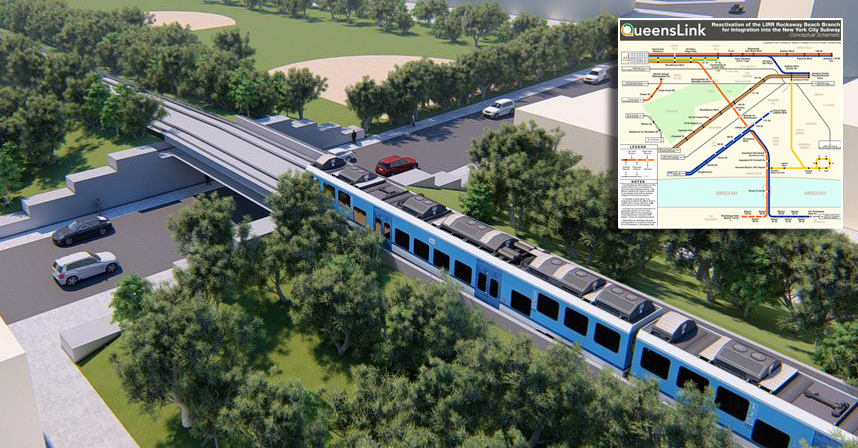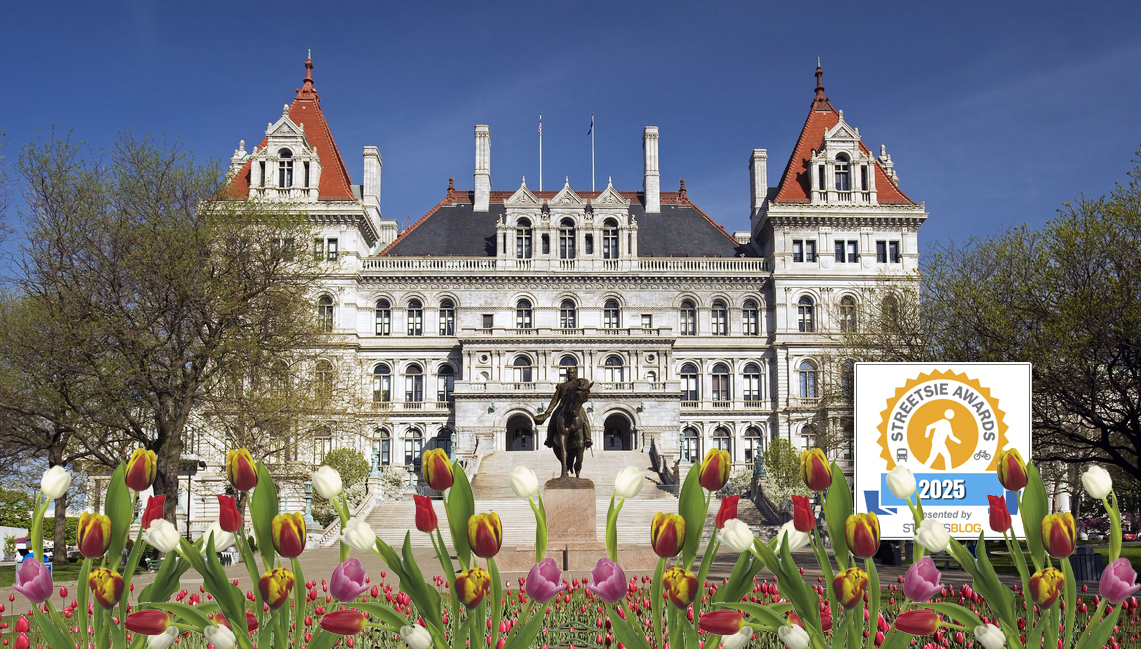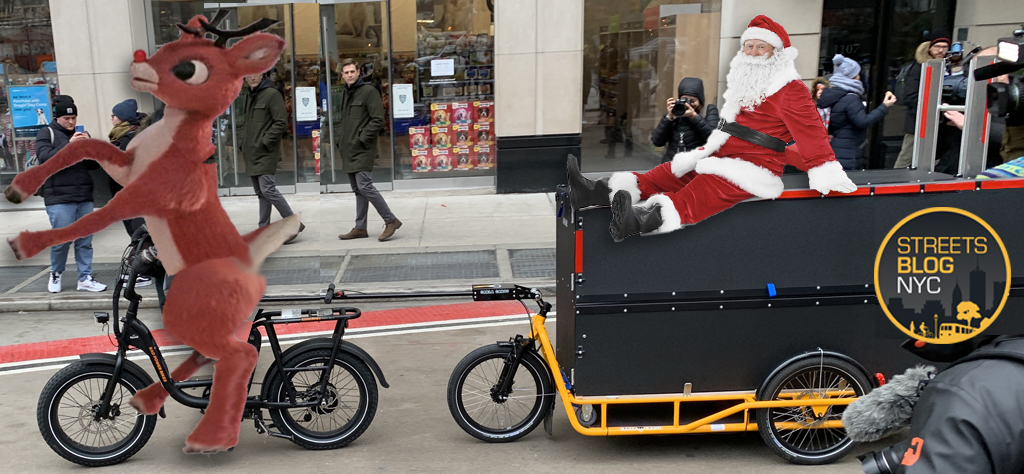
Looking down Park Slope's 9th Street at Prospect Park West. They call this "excess capacity."
A lot of different things are happening on 9th Street in Park Slope, Brooklyn. It's got some gorgeous residential blocks, a bus route, a busy bustling commercial district including a post office, grocery store, car service storefront and lots of double-parking, motorists use it to get to the Battery Tunnel and Red Hook and, of course, at the top of the hill is a grand entrance to Prospect Park fronted by a massive plaque honoring revolutionary war hero Marquis de Lafayette.
Ninth Street is very broad. It's got two wide travel lanes going in each direction and a lane of curbside parking on each side. DOT, I've been told, believes that 9th Street has "excess capacity," especially up towards the Park. In other words, the street is much wider than is needed for the number of vehicles that actually use it.

Car-free moments on 9th Street above Seventh Ave. are not hard to find.
Overly wide streets often tend to encourage speeding and create dangerous conditions. The intersection of one-way Eighth Avenue and 9th Street is a well known hot spot. In July 2005 a sedan went through the front door of Dizzy's Restaurant after making an ill-considered left turn on to Eighth Avenue. With a busy subway entrance and a sidewalk café right there, "I expected to see bodies strewn about the sidewalk when I came outside," said Dizzy's owner Matheo Pisciotta. Miraculously, no one was hurt.

Dizzy's Restaurant after a sedan came through the front door for brunch, July 13, 2005.
After that incident, a 9th Street resident named Konrad Kaletsch teamed up with Ben and Matheo, the owners of Dizzy's, to launch a petition drive for safety improvements along 8th Avenue and 9th Street (pictured above). They collected 1,187 signatures and even got Borough President Markowitz pushing DOT to make some fixes.

When cars aren't coming through the front door, Dizzy's is a Livable Streets posterchild.
Parts of the proposal that DOT is offering tonight appear to be in direct response to the community concerns put forward two years ago. Specifically, the community asked DOT to install left-turn lanes on 9th Street so that motorists wouldn't be so far away from the crosswalk they were turning in to.
So very much unlike DOT's March 15 one-way plan, today's DOT proposal isn't being dropped on the comunity from completely out of nowhere. It has been in the cooker for a couple of years as part of the package of Greater Downtown Brooklyn Transportation Improvements (PDF) that emerged from the fabled Downtown Brooklyn Traffic Calming Project. Likewise, the bike lanes are part of a comprehensive, long-term, citywide bicycle plan which aims to install more than 200 miles of new bike lanes throughout the city and create better connections to city parks, in particular.
Could DOT be doing a much better job of including community stakeholders in the actual planning process? You bet. But it is nice to see the agency responding to real concerns rather sending in a traffic engineer with solutions to problems that we don't have.
Photos: Aaron Naparstek





